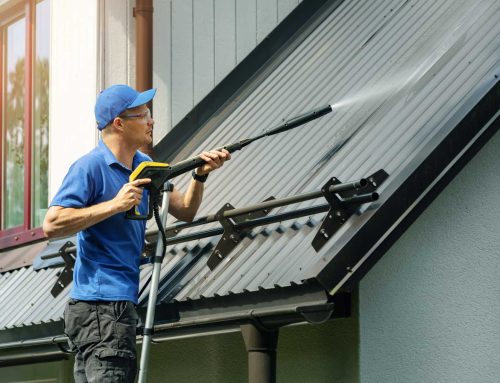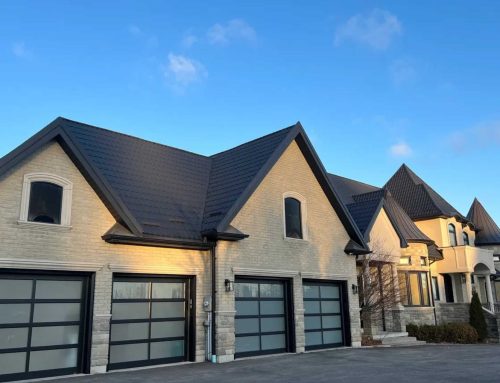Many homeowners are familiar with the constant battle with the thermostat. Some rooms are always too hot in the summer, while others are perpetually chilly in the winter, no matter how hard the HVAC system seems to work. The answer to this frustrating problem may not lie with the furnace or air conditioner itself, but right above your head. A well-insulated roof is the unsung hero of a comfortable and energy-efficient home, acting as a silent partner to your heating and cooling systems. When homeowners experience issues, their first call is often to an HVAC company, but the root of the problem is frequently the roofing system—sometimes indicating the need for a roof replacement to restore proper insulation and ventilation. This guide will explore the critical synergy between roofing insulation and HVAC performance, explaining how this connection is the key to lower energy bills, consistent year-round comfort, and the long-term health of both systems.
The Science of Heat Transfer: Your Roof’s Most Important Job
In the summer, the sun beats down on the roof. This transfers an immense amount of radiant heat directly into the attic. A poorly insulated attic can quickly become an “oven.” Temperatures can soar to 65°C or higher. This trapped heat then radiates downwards through the ceiling. This forces the air conditioner to run constantly. It struggles to keep the living space below comfortable. It is like trying to cool a room while leaving the oven door wide open. The HVAC system is forced into a losing battle against heat gain. This leads to wasted energy and high electricity bills.
In the winter, the opposite problem occurs. Heat naturally rises. All the expensive, warm air from the furnace moves upward toward the ceiling. A poorly insulated roof acts like a giant, invisible vent. It allows this valuable heat to escape freely into the cold outside air. The HVAC system is then forced into a continuous cycle. It must reheat the same space over and over. This compensates for the constant heat loss. This is the primary reason for high winter heating bills. It also causes persistently cold or drafty rooms, especially on the upper floor.
The Unseen Heroes: The Dynamic Duo of Insulation and Ventilation
Insulation is the essential barrier that slows the flow of heat. Its effectiveness is measured in R-value. A higher R-value means better resistance to heat transfer. Common insulation types include fibreglass batts and blown-in cellulose. They act like a thick, cozy blanket for the home. In the winter, this blanket keeps the warm air in. In the summer, it stops the intense attic heat from entering the living space. Proper insulation is the foundation of a home’s thermal performance. It creates a stable indoor environment in any weather.
However, insulation cannot work properly alone. It needs a crucial partner: ventilation. A healthy attic must be able to “breathe.” A balanced ventilation system creates a continuous flow of air. It usually consists of soffit vents for intake and ridge or gable vents for exhaust. In the summer, this airflow pushes out superheated air. This reduces the heat load on the insulation and the air conditioner. In the winter, it removes moisture that rises from the living space. This prevents condensation, which can lead to mould, rot, and damp, ineffective insulation.
The Ripple Effect: When a Poor Roof Strains Your HVAC System
A poorly insulated and ventilated roof has an obvious consequence: a sharp increase in energy bills. The roof’s thermal shield is compromised. This forces the HVAC system to run longer and more frequently. It must compensate for constant heat gain in summer and heat loss in winter. This is not a small inefficiency. It is a significant and preventable energy waste. It shows up on every single utility bill, month after month. This represents a constant financial drain. It is directly caused by the roof’s poor thermal performance, costing homeowners hundreds or even thousands of dollars over the years.
The hidden cost of this inefficiency is the physical strain on the HVAC system. An overworked system is like a car engine constantly running in the red. This relentless operation increases wear and tear on critical components. This includes compressors, fans, and motors. As a result, the system is more likely to break down frequently. This leads to costly and inconvenient repair bills. Ultimately, this constant strain significantly shortens the lifespan of the furnace and air conditioner. It forces a premature and expensive replacement of one of the home’s most vital pieces of equipment.
A Proactive Approach: Creating a High-Performance System
The first step in improving this system is a simple attic inspection. Homeowners can often get a good sense of their insulation’s adequacy by looking for a few key signs. If the tops of the ceiling joists are visible, the insulation level is likely insufficient for the climate. The insulation should also be in good condition—not compressed, uneven, or showing any dark stains, which can indicate moisture problems. Finally, it is important to check that soffit vents are not blocked by insulation or debris, as this can stifle crucial airflow. Remembering that exterior maintenance can also help insulation by keeping vents clear and the roof in good repair is key.
The absolute best time to upgrade attic insulation and ensure proper ventilation is during a roof replacement. With the old roofing material removed, a contractor has clear access to the roof deck and attic space, making it easy to add or top up insulation and install or improve vents. Homeowners should always discuss their energy efficiency goals with their roofing contractor. A professional can recommend the right amount of insulation to meet or exceed local building codes and design a balanced ventilation strategy. This coordinated approach ensures a high-performance system, because energy efficiency starts from top to bottom.
The Comfort Crown: Your Roof’s Reign Over Efficiency
The roof and the HVAC system are a team. A well-insulated, properly ventilated roof is the HVAC system’s best friend. It allows the system to work efficiently and effectively without being overworked. The results of this strong partnership are powerful. This leads to lower energy bills and consistent comfort in every room. The HVAC equipment benefits from a longer, healthier life, and the home’s overall value increases. Investing in a roof’s insulation is not just a maintenance cost. It is one of the smartest investments a homeowner can make for the long-term health, efficiency, and comfort of their home.





